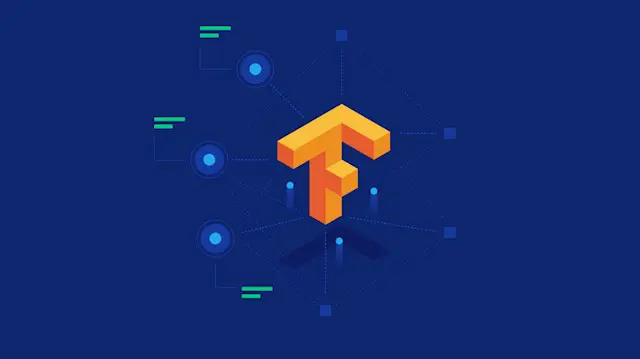
Deep Learning with TensorFlow
Self-paced videos, Lifetime access, Study material, Certification prep, Technical support, Course Completion Certificate
Uplatz
Summary
- Certificate of completion - Free
- Reed courses certificate of completion - Free
Add to basket or enquire
Overview
Uplatz provides this in-depth course on Deep Learning with TensorFlow. It is a self-paced course consisting of video tutorials. You will be awarded Course Completion Certificate at the end of the course.
TensorFlow is a framework created by Google for creating Deep Learning models. Deep Learning is a category of machine learning models (=algorithms) that use multi-layer neural networks. Whether it has to do with images, videos, text or even audio, Machine Learning can solve problems from a wide range.
Created by the Google Brain team, TensorFlow is an open source library for numerical computation and large-scale machine learning. TensorFlow bundles together a slew of machine learning and deep learning (aka neural networking) models and algorithms and makes them useful by way of a common metaphor.
TensorFlow is an open source library for fast numerical computing. ... Unlike other numerical libraries intended for use in Deep Learning like Theano, TensorFlow was designed for use both in research and development and in production systems, not least RankBrain in Google search and the fun DeepDream project.
In this online course by Uplatz, you'll learn how to build deep learning applications with TensorFlow. You'll explore the tools and software developers use to build scalable AI-powered algorithms in TensorFlow.
Curriculum
Course media
Description
Deep Learning with TensorFlow - course syllabus
Module 1 – Introduction to TensorFlow
- HelloWorld with TensorFlow
- Linear Regression
- Nonlinear Regression
- Logistic Regression
- Activation Functions
Module 2 – Convolutional Neural Networks (CNN)
- CNN History
- Understanding CNNs
- CNN Application
Module 3 – Recurrent Neural Networks (RNN)
- Intro to RNN Model
- Long Short-Term memory (LSTM)
- Recursive Neural Tensor Network Theory
- Recurrent Neural Network Model
Module 4 - Unsupervised Learning
- Applications of Unsupervised Learning
- Restricted Boltzmann Machine
- Collaborative Filtering with RBM
Module 5 - Autoencoders
- Introduction to Autoencoders and Applications
- Autoencoders
- Deep Belief Network
Who is this course for?
Everyone
Requirements
Passion to learn and succeed!
Career path
- Data Scientist - Deep Learning/TensorFlow
- Machine Learning Engineer
- Deep Learning Engineer
- AI Researcher & Developer - TensorFlow
- Python Machine Learning Engineer
- Lead Engineer/Architect
- AI Developer
- Business Analyst
- Data Consultant
- Data Strategist/Architect/Engineer
- Machine Learning Framework Developer - Python/TensorFlow
- TensorFlow Inference Engineer
- NLP Engineer
- Senior Computer Vision Engineer
Questions and answers
Currently there are no Q&As for this course. Be the first to ask a question.
Certificates
Certificate of completion
Digital certificate - Included
Course Completion Certificate by Uplatz
Reed courses certificate of completion
Digital certificate - Included
Will be downloadable when all lectures have been completed
Reviews
Currently there are no reviews for this course. Be the first to leave a review.
Legal information
This course is advertised on reed.co.uk by the Course Provider, whose terms and conditions apply. Purchases are made directly from the Course Provider, and as such, content and materials are supplied by the Course Provider directly. Reed is acting as agent and not reseller in relation to this course. Reed's only responsibility is to facilitate your payment for the course. It is your responsibility to review and agree to the Course Provider's terms and conditions and satisfy yourself as to the suitability of the course you intend to purchase. Reed will not have any responsibility for the content of the course and/or associated materials.


